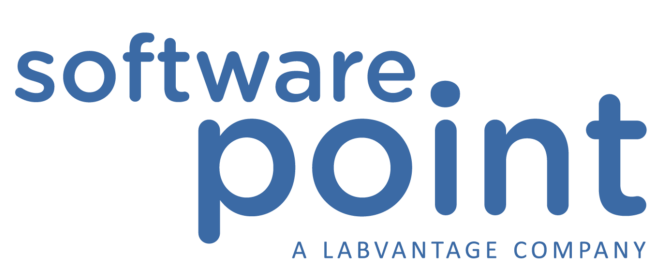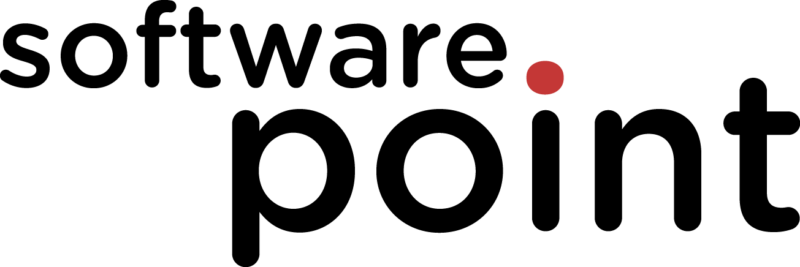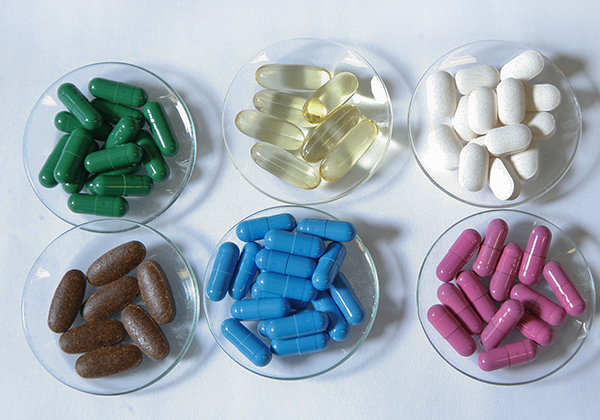
Customs Laboratory
Customs Laboratory
Next to the border
Around 16,000 inspected lots, 47,000 laboratory tests, and 950,000 results reported to the customers solely during the year 2016. Finnish Customs Laboratory is inspecting the imported foodstuff´s and consumables´ safety and conformity to standards, the monitoring of liquid fuels, and samples related to illegal import, customs clearance and taxation.
In spring Customs Laboratory hit the headlines after participating in an extensive international Opson VI operation in collaboration with Europol and Interpol, and uncovering 950,5 kilos of counterfeit and dangerous spices. No doubt Customs Laboratory is an expert of control analytics, acting as the authoritative laboratory of several branches, as a centre of expertise, and the national reference laboratory in eight different fields.
However, Quality Manager Sara Heilimo and Laboratory Engineer Jouni Lipasti are not blowing their own trumpet. ”Within the national frontiers, we have somewhat shared the tasks with different authorities, and our own scope of control field we try to cover as comprehensively as possible.”
Europe sticks together
By law, the responsibilities of Customs in Finland include the control of imported foodstuff and consumables. Therefore, Customs Laboratory inspects, in addition to customs tariffic classification samples and illegal import samples, also plenty of consumer protection samples, unlike in other countries.
Moreover, the EU evaluates the operations of Customs Laboratory, because it acts as the controlling authority and the national reference laboratory for foodstuff and food contact materials – i.e. coordinates the operations of the authoritative laboratories in Finland, arranges them training if needed as well as comparison tests, and collaborates with the other reference laboratories in the EU.
The principal customer is Customs, other important are Finnish Food Safety Authority (Evira), Finnish Safety and Chemicals Agency (Tukes), Ministry of Agriculture and Forestry, and National Bureau of Investigation.
”We serve widely the Control Department, as well as Foreign Trade and Taxation Department of Customs. Airport Customs, Post Customs, our headquarters in Helsinki and customs offices across Finland are sending us parcels to check. Furthermore, our own samplers visit the importers´ warehouses taking samples.”
The high-quality operations are based on accredited procedures. Heilimo exemplifies the every-day life of Customs Laboratory with a typical foodstuff control process:
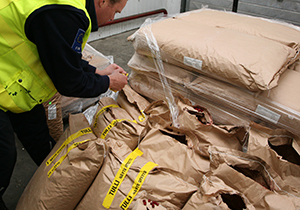 ”When Customs decides that an imported lot must be inspected, the lot is stopped and the samplers of Customs go to the importer´s warehouse and take samples. Then the sample is brought to us for investigation. To ensure the product´s safety, usually 1-10 tests are conducted. Then we send the test results to Custom´s Product Safety Unit, which makes the decision about the lot. If its import is prohibited, the commodities are destroyed, repaired or returned to the country of origin. If everything is in order, the goods continue to the shops. The item can be repaired, for example, by fixing inadequate labeling.”
”When Customs decides that an imported lot must be inspected, the lot is stopped and the samplers of Customs go to the importer´s warehouse and take samples. Then the sample is brought to us for investigation. To ensure the product´s safety, usually 1-10 tests are conducted. Then we send the test results to Custom´s Product Safety Unit, which makes the decision about the lot. If its import is prohibited, the commodities are destroyed, repaired or returned to the country of origin. If everything is in order, the goods continue to the shops. The item can be repaired, for example, by fixing inadequate labeling.”
The spot checks compose a few per cent of the whole import volumes, and the targets are selected by risk evaluation. Also, the country of origin may affect – the EU gives intense monitoring obligations, which command that certain products from certain countries must be analysed.
”Food risks may be, for instance, mycotoxins in grain products, pesticide residues in fruits and vegetables, and heavy metals in root vegetables and canned food. Objects which are in contact with food, i.e. various dishes or cutlery, are checked for not dissolving heavy metals or formaldehyde, for example. Among consumer goods we test, for example, toys for their mechanical and chemical safety; textiles for not being harmful to health; and cosmetic products for not containing illicit ingredients.”
A European wide rapid alert system is also in use, notifying immediately if some foodstuff or consumer good has been detected to be defective in one EU country, and the delivery of the product can be stopped.
Among the investigated illegal import samples, more and more novel designer drugs are found. They are notified to the surveillance system of the European Monitoring Centre for Drugs and Drug Addiction (EMCDDA).
In the Customs Laboratory entrance hall showcase there is an interesting selection of pills and medicine packs which have got caught in the checks. “If you order this kind of stuff from the web, they may contain whatever.”
All data available for everyone
For managing the enormous amount of information, Customs Laboratory acquired its first LabVantage laboratory information management system already in 2000, and thus Customs Laboratory is Software Point´s first and most long-term LabVantage client.
Completely watertight traceability was the most important goal, as it relates to the reliability of the research.
“In addition, work documentation, work flow monitoring, managing the register, and reporting the results to our customers were key objectives. With LIMS (laboratory information management system) we manage all analyses, comparison tests, methods, quality assurance, standard substances, and trainings. We wanted to gather all information into one place from where it can also be used for compiled statistics, and reports with various tools. Compilation of statistics is easier when the information is not dispersed around the organization, neither under an individual employee´s control”, Heilimo and Lipasti describe.
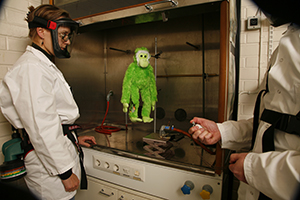 Customs Laboratory has many different processes for e.g. illegal import, food, consumer goods, fuel, and customs clearance and taxation inspections. Furthermore, samples from Customs and other authorities are investigated. ”As they all have a little bit different requirements, the report template, among others, comprises various checks and statements. Coordinating them is sometimes challenging, which is seen also in the LIMS.”
Customs Laboratory has many different processes for e.g. illegal import, food, consumer goods, fuel, and customs clearance and taxation inspections. Furthermore, samples from Customs and other authorities are investigated. ”As they all have a little bit different requirements, the report template, among others, comprises various checks and statements. Coordinating them is sometimes challenging, which is seen also in the LIMS.”
The laboratory information management system is used by all the 60 employees of Customs Laboratory, and a few in Customs headquarters. To prepare the system change, the project group was assembled of representatives of each section of Customs Laboratory and fields of study; also Data Management of Customs participated in the purchase. Five alternative systems were chosen for the tender, one being LabVantage delivered by Software Point.
”Finally there were one English and one Finnish provider. We settled on Software Point here nearby. A big reason was the support available in Finnish. The support of the English provider was difficult to get in Finland, and the provider should have been travelling back and forth all the time.”
”The project group hold requirement meetings considering together the needs and information contents. The implementation of our first LIMS took a couple of years, and we got a temporary system in the meantime.”
Later, version updates and continuous tailoring have been done as new needs appear. The present web-based LabVantage Enterprise 7 was put into operation in 2016.
”We do have such needs that laboratories are demanded to possess and which, so far, do not exist in our LIMS. For instance, a chemical register fulfilling the authoritative requirements. We are seeking for a new functional solution to this, and building it to the LIMS is one potential way.”
Customs Laboratory´s LIMS Application Lead Jouni Lipasti, responsible for methods development, maintenance, running the samples, and measuring equipment, together with Sara Heilimo, in charge of the laboratory´s ISO quality system, quality training, internal audits and LIMS development, advise those planning to renew their information management systems to reserve enough time for the project preparations.
”To plan the system, you should have one person for a year. We have learnt that it pays the effort to think through the processes with no hurry. It is worth asking other users for their experiences. In those days we had no one to ask, but now we have been asked for advice”, they smile.
Since 1907
”Trustworthy test results have remarkable impacts: Customs gets definite research results to support crime investigation. Safety of food and consumer goods improve in Finland. These are the goals of our operation”, Sara Heilimo sums up the benefits of the system.
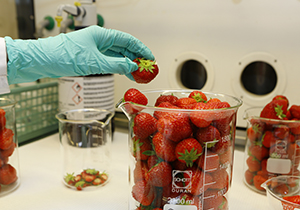 Acted already 110 years under the same name, Customs Laboratory was evaluated excellent this spring – both by the European Commission Directorate-General Health and Food Safety (DG SANTE) experts´ evaluating the supervision of the genetically modified organisms (GMO), as well as by the FINAS accreditation service´s evaluating Customs Laboratory´s testing function.
Acted already 110 years under the same name, Customs Laboratory was evaluated excellent this spring – both by the European Commission Directorate-General Health and Food Safety (DG SANTE) experts´ evaluating the supervision of the genetically modified organisms (GMO), as well as by the FINAS accreditation service´s evaluating Customs Laboratory´s testing function.
The analytics have also changed in 110 years. ”We are seeing ever smaller concentrations. Hand-made basic methods have decreased and we are moving on towards mass spectrometry. Electronic systems, tablets and wireless connections are replacing papers.”
”We are seeking new alternatives to ease the work. We´re interested in, for example, bar code readers, RF tags, and all kinds of automation in transferring data to other systems – like the KUTI database, a part of Evira´s and Valvira´s national environmental healthcare system. We also develop digital reporting to European Food Safety Agency (EFSA).”
Putting the flags out for its anniversary, Customs Laboratory organizes an Open House Day in Espoo on Friday 25th August. The program and registration instructions are published on the laboratory´s website.
More info: https://tulli.fi/en/frontpage
Text: Software Point
Photos: Customs
20.6.2017
